We only care about you if it’s really about us
October 28, 2014
 We recently bought an ad for a client and the ad rep suggested we make a big deal out of the fact that our client has been in business for 130 years. I politely told her that we definitely were not going to do that.
We recently bought an ad for a client and the ad rep suggested we make a big deal out of the fact that our client has been in business for 130 years. I politely told her that we definitely were not going to do that.
Instead, we were going to talk about something their readers and our prospects might actually care about.
My conversation with her is what prompted this blog post. We’ve all seen the ads or sales that are somehow tied to a businesses 25th anniversary or the “we’ve been in business for a century” sale announcements.
The reality is – no one cares. While that may be a laudable accomplishment – to have hung in there that long, from your consumer’s point of view – it’s fluff or a gimmick (we’ve been around for 50 years so everything is 50% off!).
Is a business going to offer me a better product after they’ve been around for 100 years? Was the stuff they sold in their ninety-fifth year just junk? Of course not. Is someone who just turned 60 a better advisor than when she was 59? Nope.
You make that the focus of your ad or your sale when you don’t have anything better to say. And if you can’t come up with something more customer-centric than that to say – you’re lucky to still be in business.
It’s actually a symptom of an age-old marketing problem. Businesses talk about themselves rather than talking about what the customer cares about.
Here’s how to fix two of the most common “it’s all about me” types of marketing statements and make them customer centric and customer valued communications instead.
#1 — We’re old and you should care
All about us: We’re 100 years old. Come enjoy some birthday cake and celebrate with us as we cross the century mark.
All about them: Over the many years we’ve been in business, we’ve learned that our customers value three things. They value incredible customer service (click here to speak live with one of our teammates), fair pricing (click here to read about our fair price every time program) and they want quality they can count on (watch a short video about our factory’s 100% right or 100% wrong policy).
You’re saying the same thing – we’ve been in business long enough to be stable, to have earned our customer’s trust and no one has to worry about you being a fly by night operation. But when you push beyond focusing on yourself, you can outline exactly why your longevity is of value to the prospect that is considering doing business with you.
#2 – The difference is our people (perhaps the most trite sentence uttered in marketing today)
All about us: Our people really care. You’re not just a number to us.
All about them: Hi Mr. McLellan – we see that you’re going to be staying at our hotel XYZ in Big City. We’re glad to have you staying with us and want to make sure we do everything in our power to make your stay an awesome one. As the manager of the hotel, I want you to have my direct line (123-456-7890) and email (manager@BigHotel.com) so you can get a hold of me if there’s anything you need.
Don’t tell me that your people care. Show me. It sounds like hype when you brag about it. It feels remarkable when I experience it for myself. The truth is…most businesses say it but few actually deliver on it. Why not just shut up and show it?
If you’re going to expend the effort to talk to your customers and prospects, stop talking about yourself and talk about what they care about — what’s in it for me.
More

 There’s a lot of discussion around the notion that our attention spans are shortening. Forbes recently blamed it on social media and the nonstop 24/7 media barrage.
There’s a lot of discussion around the notion that our attention spans are shortening. Forbes recently blamed it on social media and the nonstop 24/7 media barrage.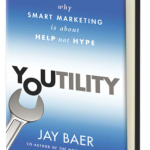
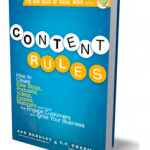 Content Rules (
Content Rules ( Keeping up with the Quants (
Keeping up with the Quants (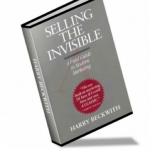 In Selling the Invisible, Beckwith argues that what consumers are primarily interested in today are not features, but relationships. Even companies who think that they sell only tangible products should rethink their approach to product development and marketing and sales.
In Selling the Invisible, Beckwith argues that what consumers are primarily interested in today are not features, but relationships. Even companies who think that they sell only tangible products should rethink their approach to product development and marketing and sales.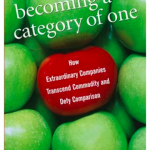 Joe Calloway’s
Joe Calloway’s
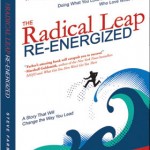 And…not specifically a book for marketers — a book for leaders. This is one of my all time favorites.
And…not specifically a book for marketers — a book for leaders. This is one of my all time favorites. 



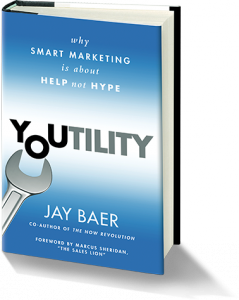 Let’s look at the reality:
Let’s look at the reality:
 In today’s marketplace, a company’s website is their first impression with prospects. It’s a rare purchase today that doesn’t begin with some sort of research or due diligence. And as consumers (both B2C and B2B) find themselves more time starved and more web savvy – the research tool of choice is often a Google search.
In today’s marketplace, a company’s website is their first impression with prospects. It’s a rare purchase today that doesn’t begin with some sort of research or due diligence. And as consumers (both B2C and B2B) find themselves more time starved and more web savvy – the research tool of choice is often a Google search.
 I grew up in
I grew up in 
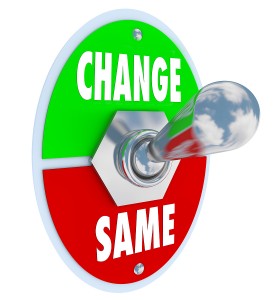 You know, the annoying thing about clichés is that they’re based in truth, even though that truth may be a bit worn in places. And lately I’ve been very aware of the idiom “the only constant is change” as it relates to business and especially to marketing.
You know, the annoying thing about clichés is that they’re based in truth, even though that truth may be a bit worn in places. And lately I’ve been very aware of the idiom “the only constant is change” as it relates to business and especially to marketing.